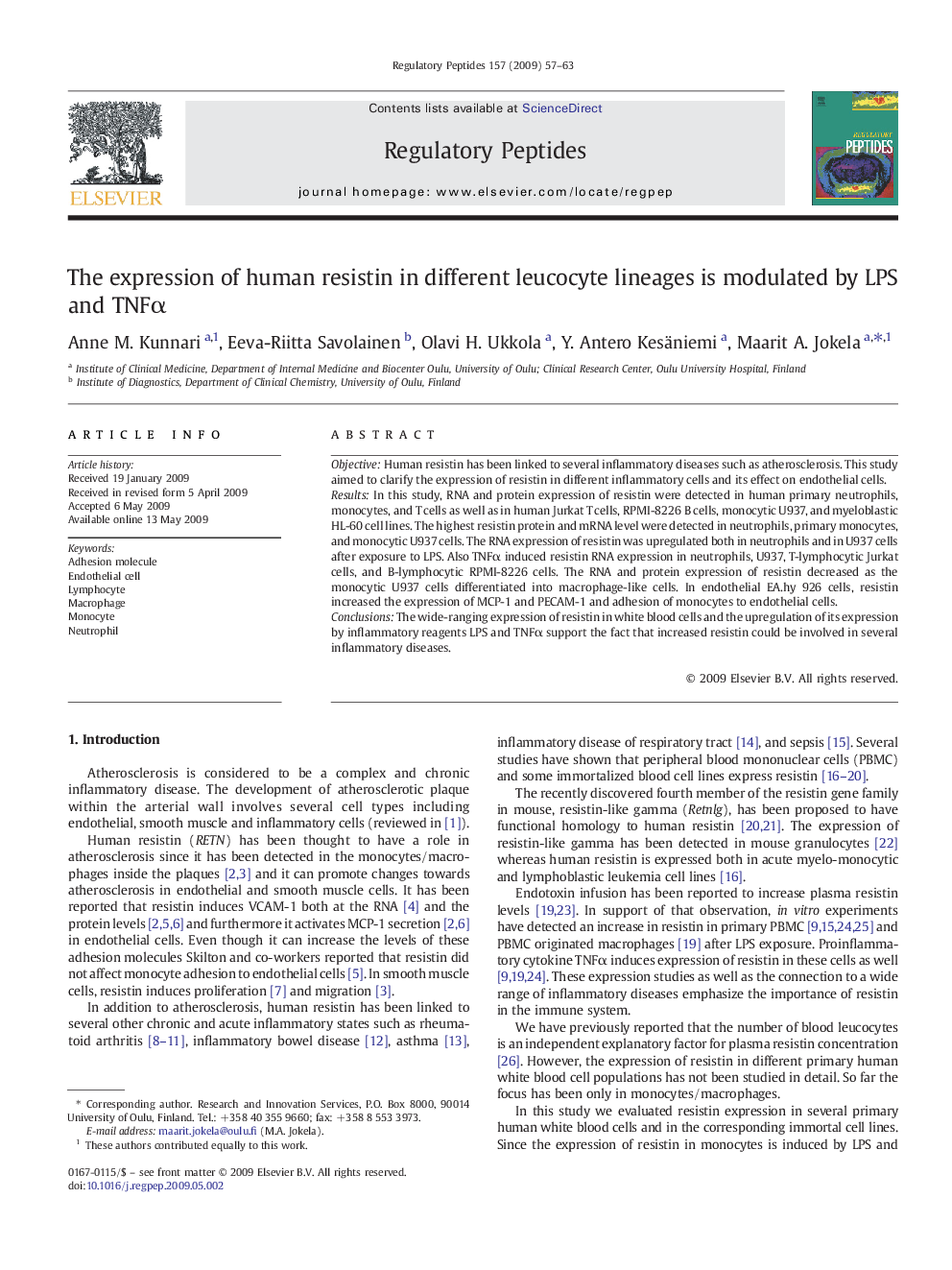| Article ID | Journal | Published Year | Pages | File Type |
|---|---|---|---|---|
| 2023052 | Regulatory Peptides | 2009 | 7 Pages |
ObjectiveHuman resistin has been linked to several inflammatory diseases such as atherosclerosis. This study aimed to clarify the expression of resistin in different inflammatory cells and its effect on endothelial cells.ResultsIn this study, RNA and protein expression of resistin were detected in human primary neutrophils, monocytes, and T cells as well as in human Jurkat T cells, RPMI-8226 B cells, monocytic U937, and myeloblastic HL-60 cell lines. The highest resistin protein and mRNA level were detected in neutrophils, primary monocytes, and monocytic U937 cells. The RNA expression of resistin was upregulated both in neutrophils and in U937 cells after exposure to LPS. Also TNFα induced resistin RNA expression in neutrophils, U937, T-lymphocytic Jurkat cells, and B-lymphocytic RPMI-8226 cells. The RNA and protein expression of resistin decreased as the monocytic U937 cells differentiated into macrophage-like cells. In endothelial EA.hy 926 cells, resistin increased the expression of MCP-1 and PECAM-1 and adhesion of monocytes to endothelial cells.ConclusionsThe wide-ranging expression of resistin in white blood cells and the upregulation of its expression by inflammatory reagents LPS and TNFα support the fact that increased resistin could be involved in several inflammatory diseases.
